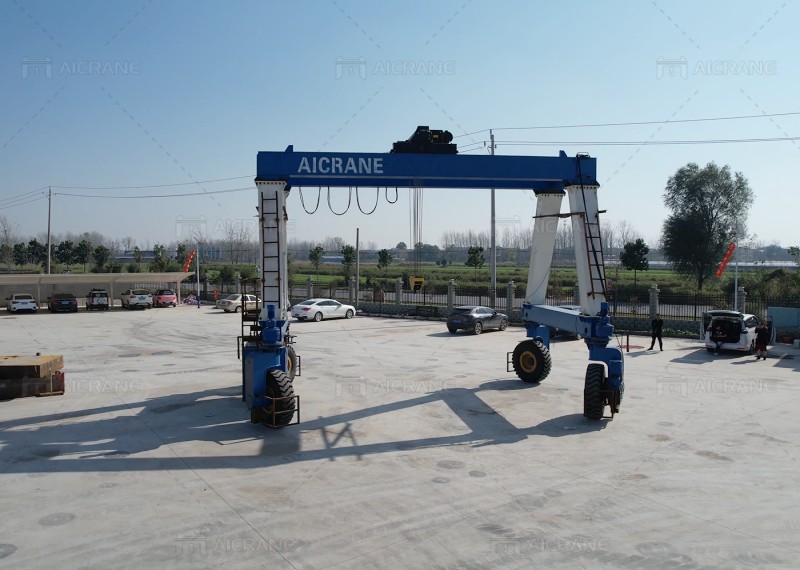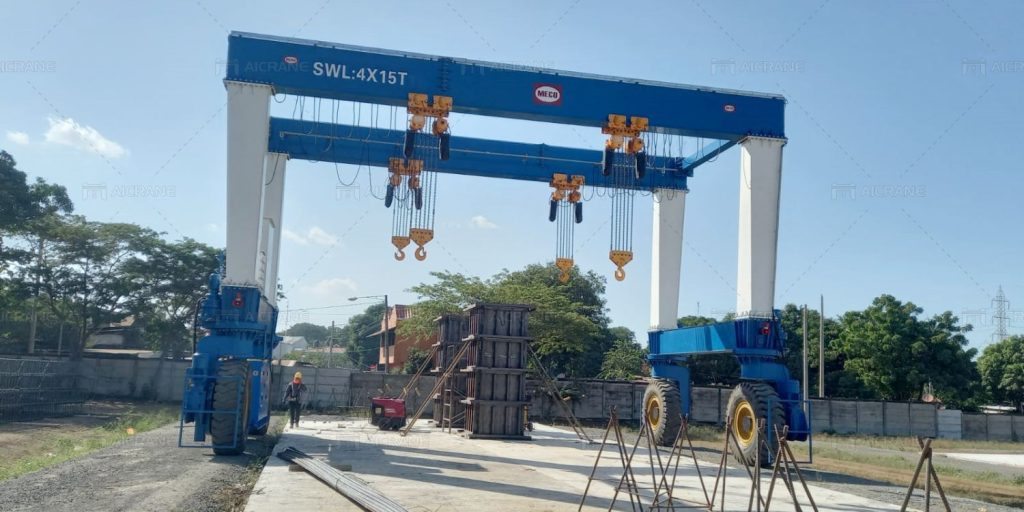In the bustling world of logistics and container handling, efficiency and adaptability are paramount. At the heart of modern port operations lies a revolutionary solution: the rubber tired gantry crane (RTG). These remarkable machines have redefined mobility in container terminals, offering unparalleled flexibility and productivity. In this article, we’ll delve into the transformative power of rubber tired gantry cranes, exploring their features, benefits, and the impact they have on port operations worldwide.
The Evolution of Container Handling
Before the advent of rubber tired gantry cranes, traditional quay cranes dominated container terminals. While effective for transferring containers between ships and shore, quay cranes were constrained by their fixed position and limited mobility. This limitation led to congestion and inefficiencies in terminal operations, particularly in handling containers within the yard.

Enter the Rubber Tired Gantry Crane
The introduction of rubber tired gantry cranes revolutionized container handling operations by combining the lifting capabilities of traditional cranes with enhanced mobility. Unlike their fixed counterparts, RTGs are equipped with rubber tires, allowing them to traverse container stacks and maneuver with ease within the terminal yard. This mobility not only reduces congestion but also enables terminals to maximize space utilization and optimize workflow.
Features and Capabilities
Rubber tired gantry cranes boast a host of features that contribute to their effectiveness in container terminals:
- Mobility: The ability to move independently throughout the terminal yard enables RTGs to quickly respond to changing operational demands and efficiently handle containers from arrival to departure.
- Flexibility: RTGs are designed to handle a wide range of container sizes and types, including standard, reefer, and oversized containers. This flexibility ensures that terminals can accommodate diverse cargo requirements.
- Reach and Stack Height: RTGs are equipped with telescopic spreaders and high stacking capabilities, allowing them to reach multiple container rows and stack containers several tiers high. This maximizes storage capacity and optimizes terminal space.
- Automation Integration: Many modern RTGs feature advanced automation technologies, such as remote control and semi-automated operation. These features enhance safety, productivity, and operational efficiency by reducing the reliance on manual labor and streamlining crane movements.

Benefits of Rubber Tired Gantry Cranes
The adoption of rubber-tired gantry cranes offers numerous benefits to container terminals and port operators:
- Increased Productivity: The mobility and versatility of RTGs enable terminals to expedite container handling operations, resulting in shorter turnaround times for vessels and improved overall productivity.
- Optimized Yard Layout: RTGs’ ability to navigate container stacks efficiently allows terminals to optimize yard layout and minimize congestion. This optimization enhances operational flow and reduces delays in cargo movement.
- Cost Savings: The use of RTGs can lead to cost savings for terminal operators through improved operational efficiency, reduced labor requirements, and enhanced space utilization.
- Environmental Sustainability: Many modern RTGs are designed with eco-friendly features, such as electric power options and energy-efficient systems. This focus on sustainability aligns with the industry’s commitment to reducing carbon emissions and environmental impact.
The Future of Container Handling
As global trade volumes continue to rise, the demand for efficient and adaptable container handling solutions will only increase. Rubber tired gantry cranes are poised to play a pivotal role in shaping the future of port operations, offering a blend of mobility, flexibility, and productivity that traditional cranes cannot match.
In conclusion, the power of rubber-tired gantry cranes lies in their ability to redefine mobility and transform container handling operations in port terminals. With their unmatched versatility, efficiency, and adaptability, RTGs are driving innovation and shaping the future of logistics in an increasingly interconnected world. As the industry evolves, the impact of RTGs will continue to be felt, revolutionizing the way goods are transported and managed across the globe.